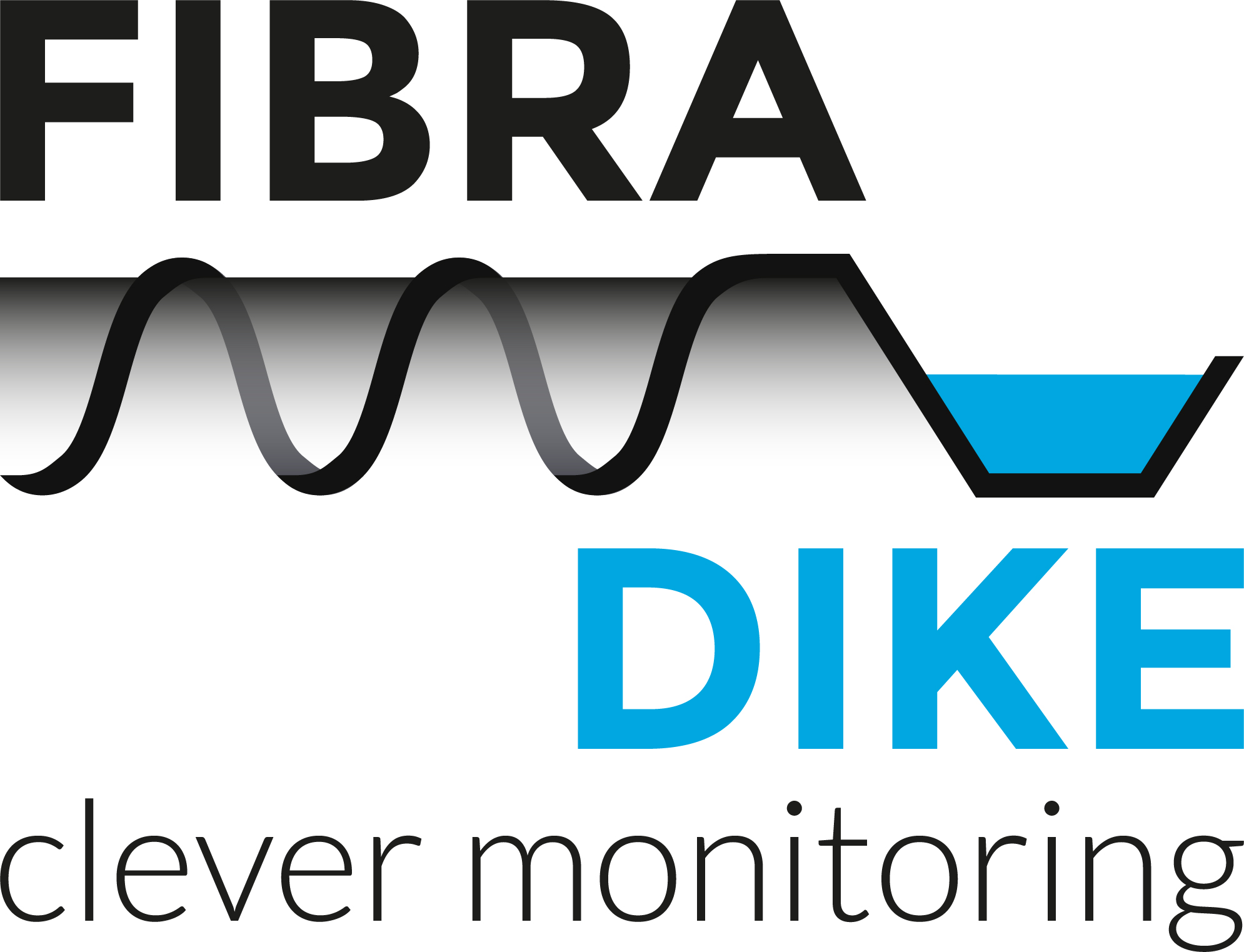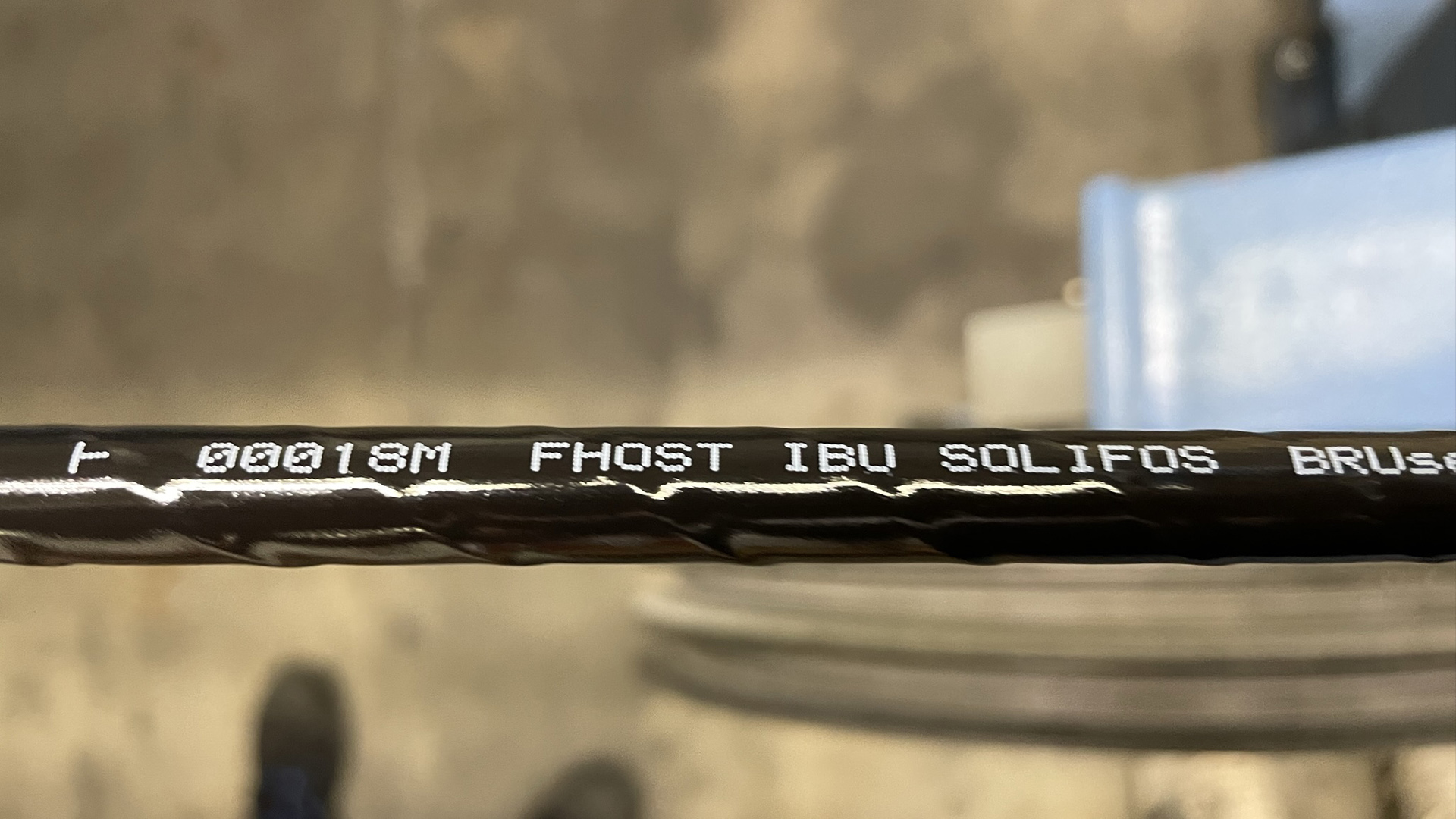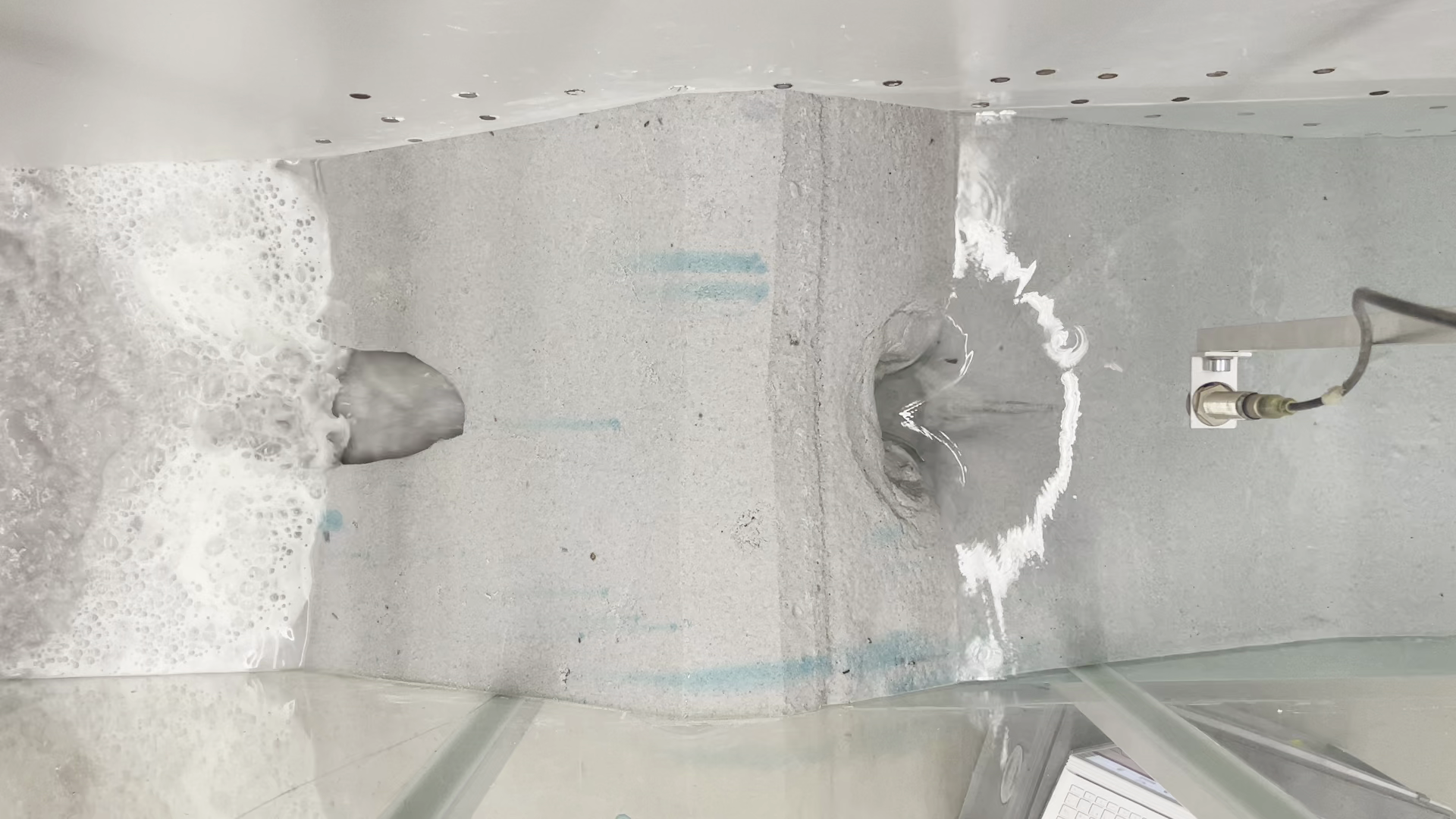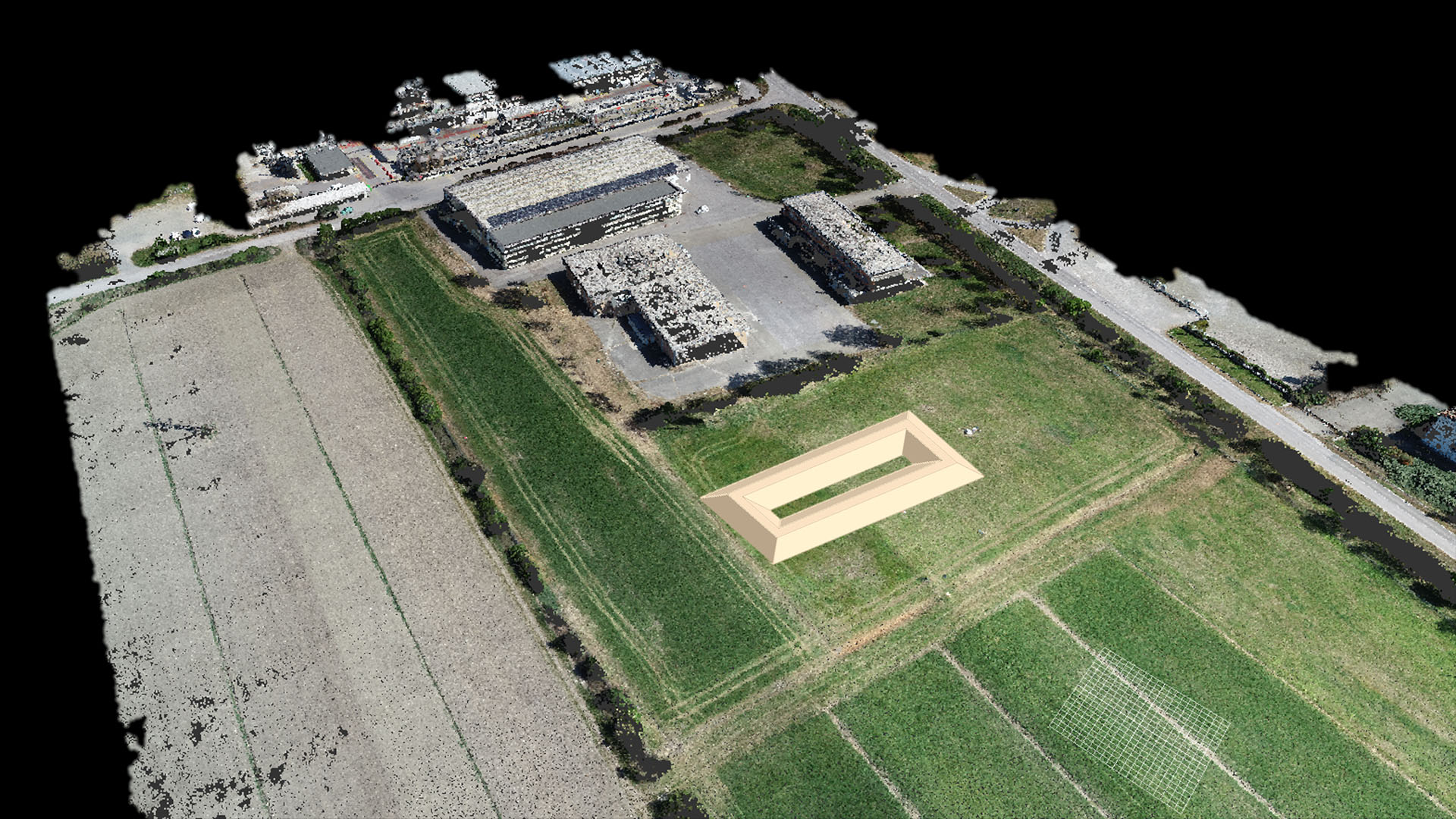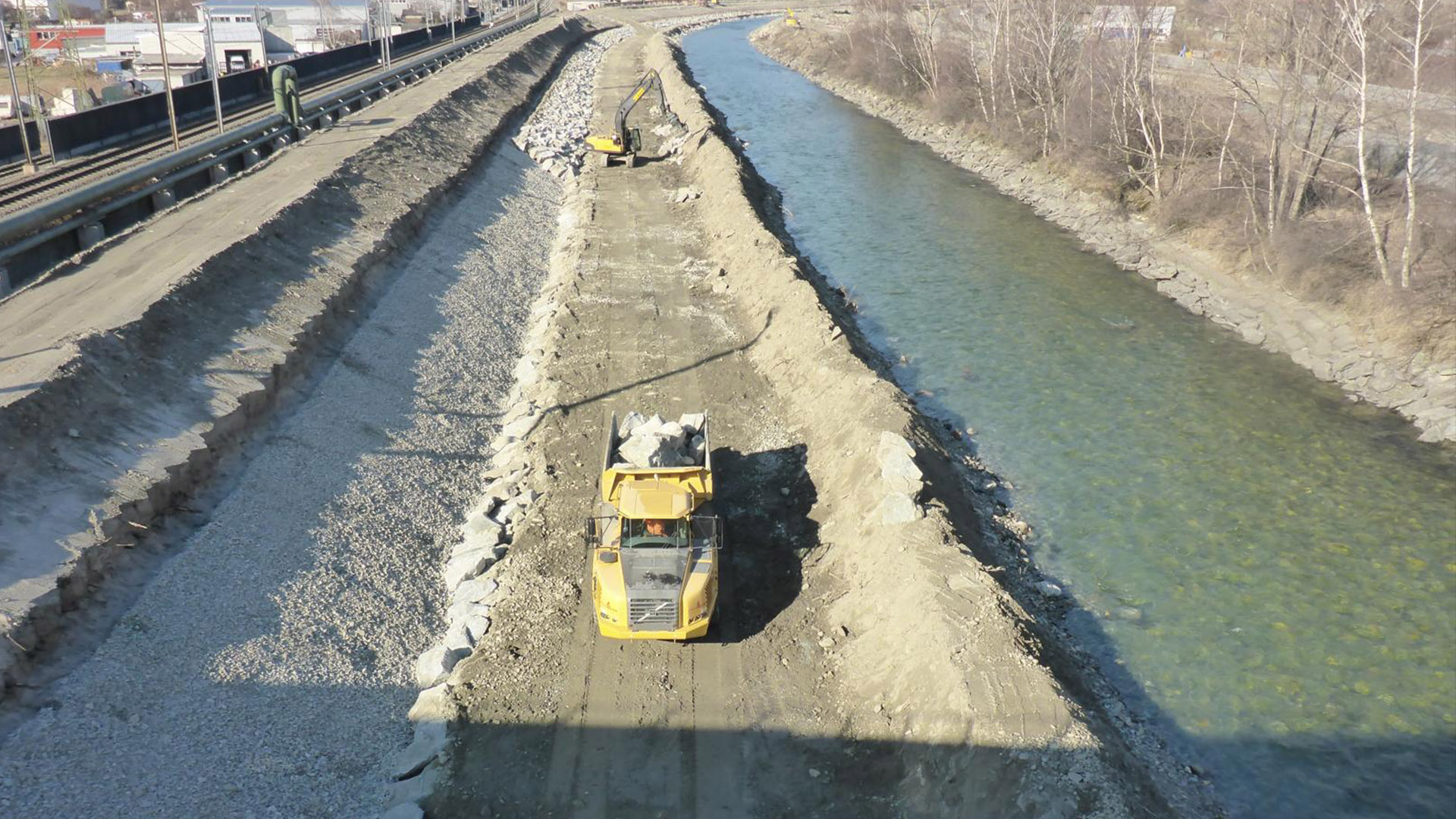Fibra Dike
Project Overview
Short introduction of the project, objectives and methodology adopted
Introduction and motivation
Levees, also known as flood embankments or dikes, play a crucial role in defending the environment from uncontrolled river or coastal flooding and preventing the destruction or damage of infrastructures. In Switzerland, for example, the long-term annual average of these flooding damages amounts to some 299 million CHF/year for the period 1972 to 2019 (Reference (Liechti, 2021). Given the importance of the aims that levees fulfill, and in view of climate change effects, the relevance of correct and adequate monitoring becomes obvious.
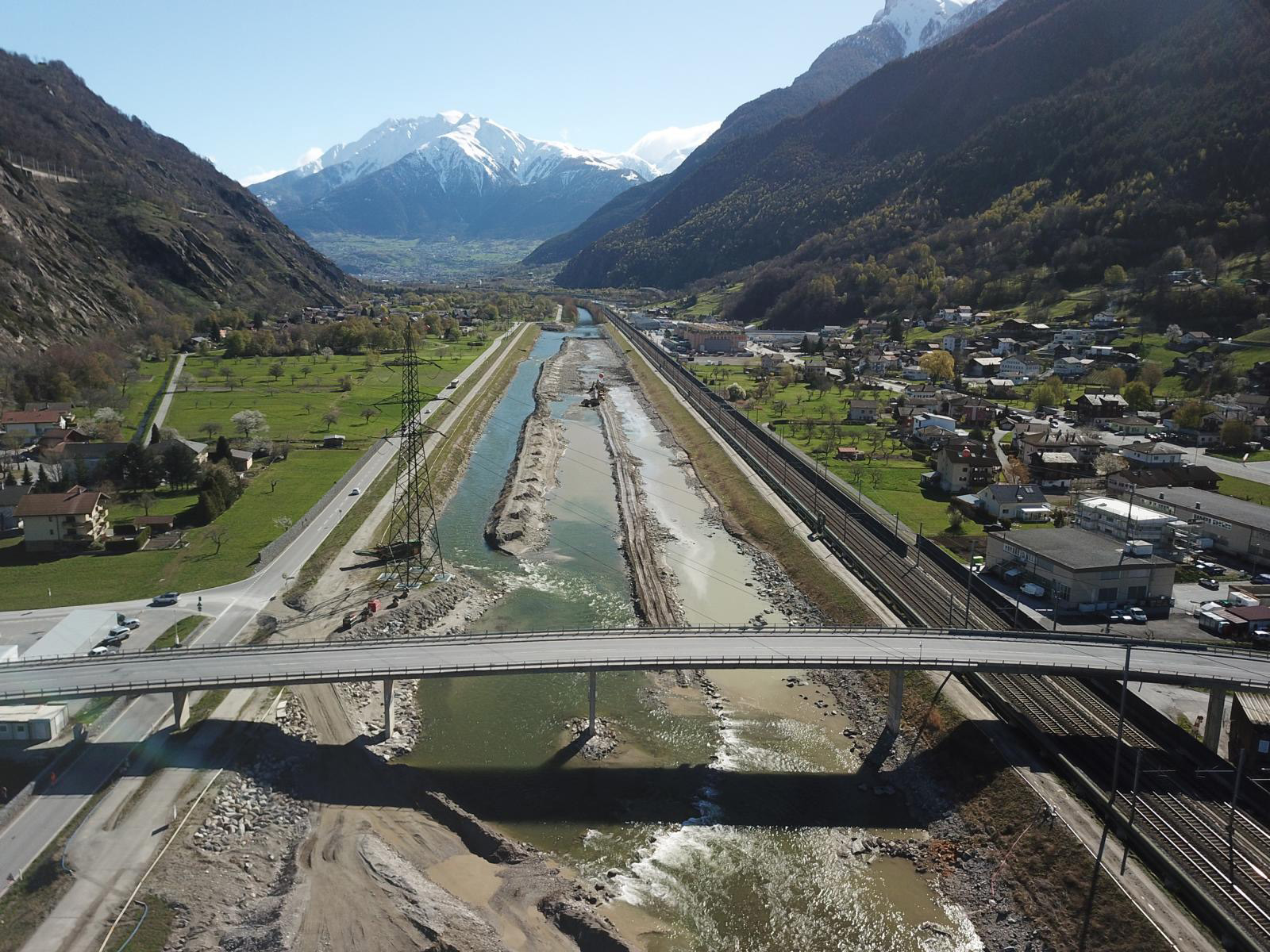
Conventional sensors measure the main risk factors for seepage through embankments, i.e. deformation, internal erosion, and surface erosion mainly in a punctual manner. Early detection of failure is therefore quite difficult if not impossible. In this respect, an automatic monitoring system distributed along the entire length of a levee, including an integrated alarm system, would represent a step forward in the comprehension of the hydro-mechanical processes taking place in the embankments. Moreover, it would provide key information at an early stage for countermeasures.

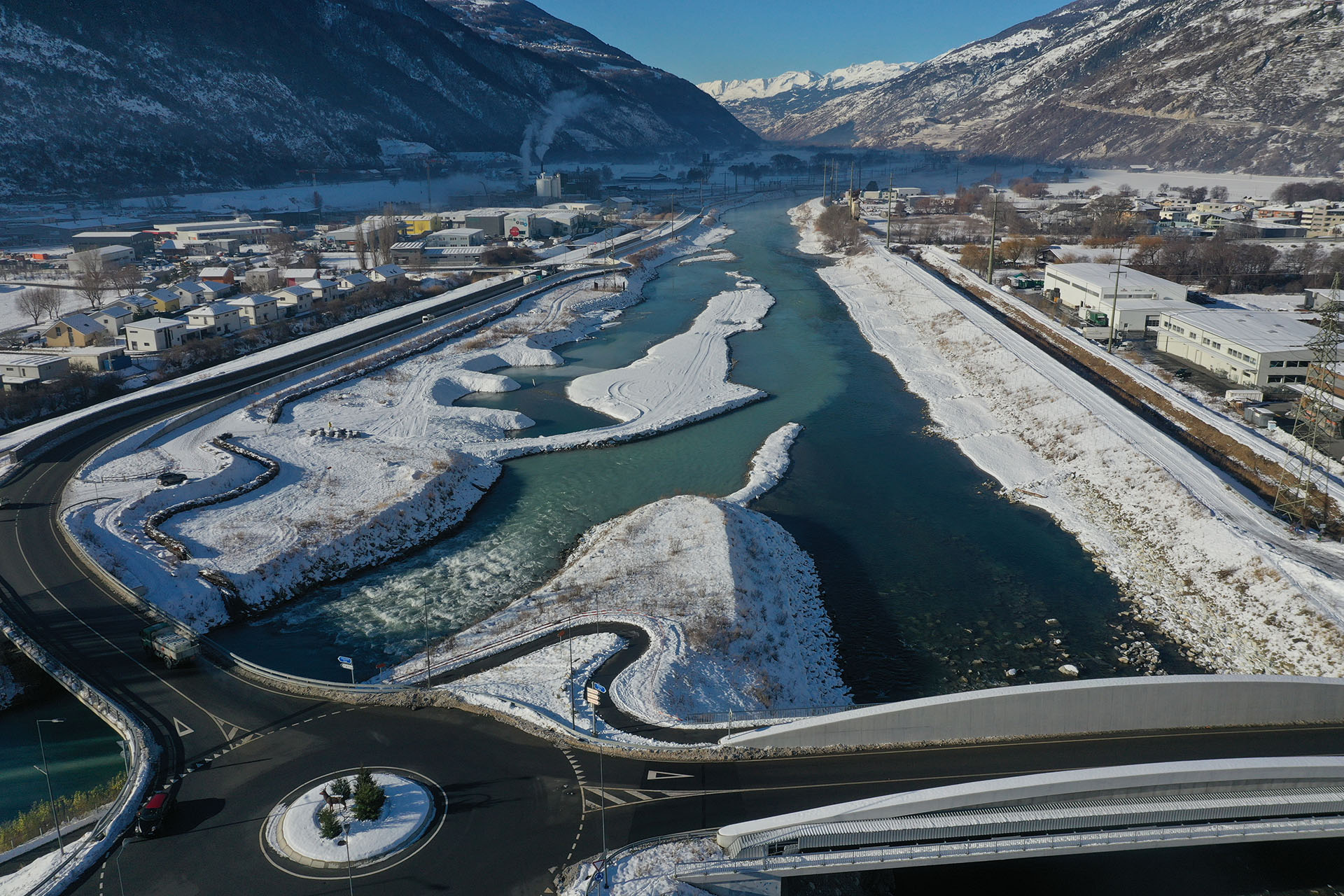
Objectives and goals
The main objective of the project is to develop a new distributed fiber-optical monitoring system and methodology for identifying, locating and quantifying in real time the following:
- stability issues of levees
- erosion and scouring of levees and riverbeds and banks
- interchange between groundwater and river flow
Methodology
To achieve the aforementioned goals, the following steps are foreseen:
- New DFO pressure sensor
Design and implementation of a new Distributed Fibre Optic (DFO) sensor for the measurement of both soil and pore water pressures in the embankment.
- Small scale testing
Calibration of the sensor’s functionality (new and standard DFO sensors) in a reduced scale device at the OST Geotechnical Laboratory.
- Full scale testing
Validation of the DFO sensors in an experimental test field (full-scale model) in Boretto (Italy), an area owned by the AIPo Science Centre, to test the implementation of the new methodology and monitoring system.
- Interpretation
Numerical and analytical interpretation of the measurement data obtained with the DFO monitoring system in the Boretto test field.
- Implementation
The new DFO monitoring system is implemented and installed during the construction of a real levee on the Rhône river. In particular, the phenomena of erosion and scouring of the river bed and the interchange of river and groundwater flows are examined with the aid of the new measuring system.
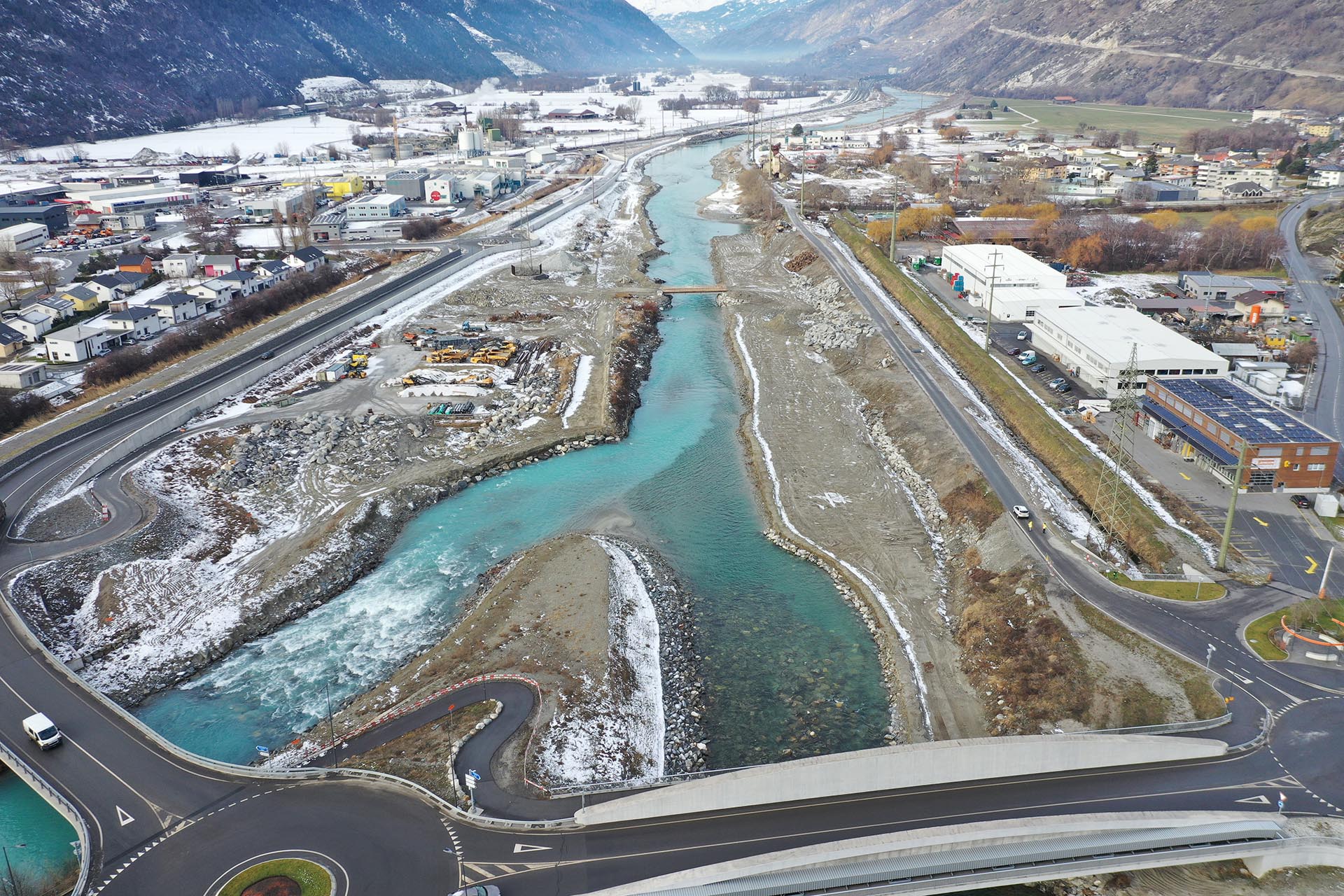
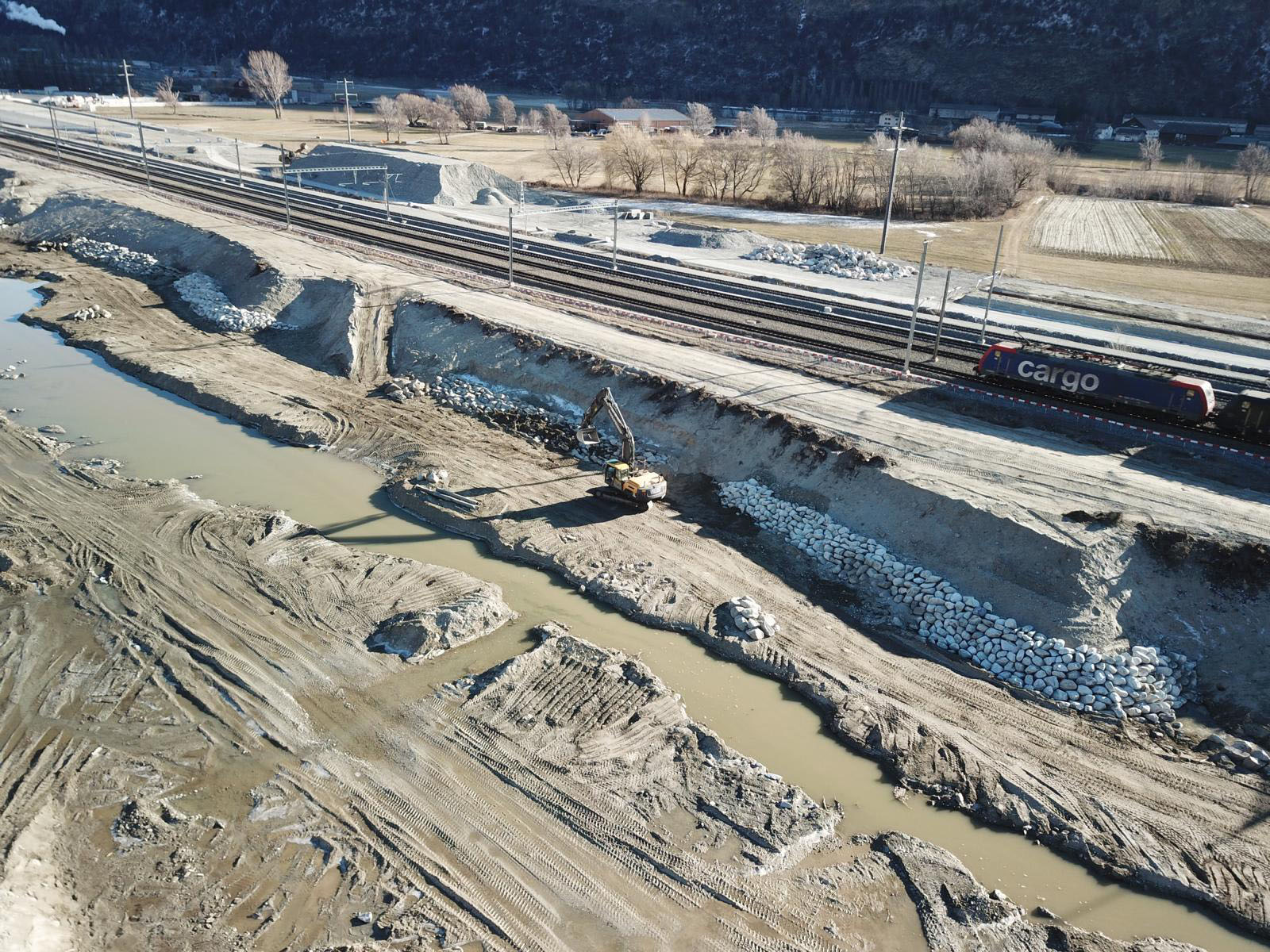
See other Project steps
New DFO pressure sensor
Design of a new DFO sensor for soil and pore water pressure measurements
Small scale testing
Calibration of the new DFO sensor’s functionality at a reduced scale
Full scale testing
Validation of the new DFO sensor in an experimental test field (full-scale model)
Interpretation
Numerical and analytical interpretation of the measurement data
Implementation
Implementation of the new DFO monitoring system in a real levee on the Rhône river.
